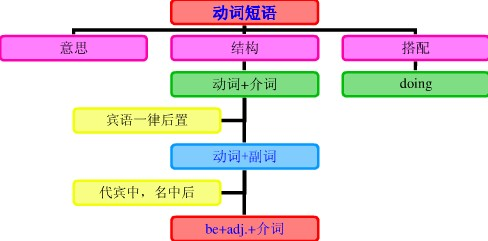本试题 “Food supplies in the flood-stricken area______.We must act immediately before there's left.[ ]A. have run outB. are running outC. have been run out...” 主要考查您对动词短语
现在进行时
等考点的理解。关于这些考点您可以点击下面的选项卡查看详细档案。
- 动词短语
- 现在进行时
动词短语的概念:
动词常和某些其他词类用在一起,构成固定词组,形成所谓短语动词(phrasalverb)。和动词一样,短语动词也可分为及物和不及物两种。短语动词可以作为一个整体看待,同一般动词一样使用。
动词短语的搭配类型:
1)动词+介词:这类短语动词用作及物动词,后面须跟宾语。
如:The small boy insisted on going with his parents. 那男孩坚持要跟父母一起去。
Do you often listen to broadcasts in English? 你常听英语广播吗?
Look at the children. Aren't they lovely? 看着这些孩子们。他们多么可爱呀!
We stand for self-reliance. 我们是主张自力更生的。
这一类的短语动词还有很多,如depend on(upon)(依靠),wait on(服侍),look for(寻找),deal with(对待),look after(照料),wait for(等待)等。
2)动词+副词:
这类短语动词有的用作及物动词,有的用作不及物动词。
如:I always get up as soon as the bell rings. 我总是一打铃就起床。(不及物)
Look out, there's a car coming! 当心,来汽车了!(不及物)
Have you handed in your exercises already? 你已经交练习了吗?(及物)
Please don't forget to put on your coat, it's cold outside. 请不要忘记穿外衣,外面很冷。(及物)
这一类的短语动词还有很多,及物如put out(扑灭),eat up(吃光),put down(放下);不及物如set off(出发),come up(走近),go on(继续)。
注:"动词+副词"这类短语动词和上面第一类"动词+介词"的不同之处在于:"动词+介词"用作及物动词,后面须跟宾语。"动词+副词"则有的及物,有的不及物;用作及物动词而宾语为人称代词或自身代词时,副词往往放在宾语之后。
如:Please wake me up at five tomorrow. 请在明天早上五点唤醒我。
If you have done your exercises, please hand them in. 如果你们练习做完了请交来。
She doesn't normally behave like that, she's putting it on. 她通常并不如此表现,她是装出来的。
注:这类短语动词有不少可兼作及物和不及物动词用。
如:He took off his hat when he entered the office. 他进办公室后脱下帽子。(及物)
The plane took off at seven sharp. 飞机在七点整起飞。(不及物)
Charlie rang up Neil to ask about the time of the meeting. 查理打电话给尼尔问开会的时间。(及物)
If you can't come, please ring up and let us know. 你如来不了,请来电话告诉我们一声。(不及物)
3)动词+副词+介词:
"动词+副词"之后有的可以再加一个介词,形成另一种短语动词。这类短语动词用作及物动词。
如:Do not give up hope. We must go on with the experiment 不要失望。我们必须继续试验。(go on with继续)
He came up to me. 他走到我跟前。(come up to走近)
这类短语动词还有:look down upon(看不起),do away with(去掉),put up with(忍受)等。
4)动词+名词+介词:
这类短语动词也是及物的。
如:He shook hands with all the guests at the banquet. 他在宴会上和宾客一一握手。
Young pioneers often come to the Children's Palace to take part in after school activities.少先队员经常到少年宫来参加课外活动。
Pay attention to the temperature of the stored rice. 注意仓库里的稻谷的温度。
Her job is taking care of the babies. 她的工作是照顾婴儿。
这一类短语动词还有:put an end to(结束),take notice of(注意),catch hold of(抓住),lose sight of(看不见),make use of(利用)等。
动词短语知识体系:

现在进行时的概念:
现在进行时表示现在或当前一段时间正在进行的动作。可以表示有计划的未来,也就是用现在进行时表示将来。现在进行时的构成是:主语+be+v.ing〔现在分词〕形式:
例如:He is writing on the desk.
现在进行时的基本用法:
表示现在(指说话人说话时)正在发生的事情。
例如:We are waiting for you. 我们正在等你。
b. 习惯进行:表示长期的或重复性的动作,说话时动作未必正在进行。
例如:Mr.Green is writing another novel. 他在写另一部小说。(说话时并未在写,只处于写作的状态。)
c. 表示渐变,这样的动词有:get, grow, become, turn, run, go, begin等。
例如:The leaves are turning red. 叶子在变红。
It's getting warmer and warmer. 天越来越热了。
d. 与always, constantly, forever等词连用,表示反复发生的动作或持续存在的状态,往往带有说话人的主观色彩。
例如:You are always changing your mind. 你老是改变主意。
现在进行时用法点拨:
1、一般现在时代替现在进行时:
在Here comes…/There goes…等句型里,用一般现在时代替现在进行时。
例如:There goes the bell.铃响了。
2、现在进行时代替将来时:
1)表示即将发生的或预定中计划好的活动。
例如:Are you staying with us this weekend? 和我们一起度周末好吗?
We are leaving soon. 我们马上就走。
2)渐变动词,如get, run, grow, become, begin以及瞬间动词die等。
例如:He is dying. 他要死了。
与“Food supplies in the flood-stricken area______.We must ac...”考查相似的试题有:
- Sometimes you just have to ______ disagreements. And making compromises is an important skill needed in your future.A...
- My sister _____ the League last month and she has decided to _____ the activity to help the aged next week.[ ]A. join...
- 31. They had a desire that I______ their wedding.A.attendingB.attendsC.attendedD.attend
- The graduates ______ into the company usually receive strict training before they start to work.A.acceptedB.admitt...
- Fewer people ______ to live in the north of the country.[ ]A. insistB. requireC. desireD. request
- I had not been invited to the party,so I felt______and a bit hurt.A.left outB.left behindC.left behindD.left off
- . The year 2003 ____ a wild spread of SARS, a disease people knew little about at that time.A.accompaniedB.followed...
- Who do you know Dora is going to _____ ?A.get marriedB.marry toC.marry withD.marry
- The final examination is coming up soon. It’s time for us to___our studies.A.get down toB.get outC.get back forD....
- There is no beer left and the shops are closed, so you will have to ______it. (厦门市)A.go forB.go overC.go throug...